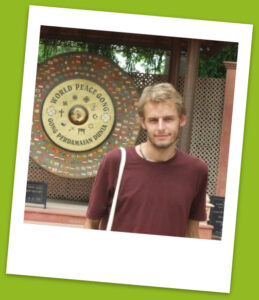“Preventing famine in Kenya: In search of a new strategy”
August 14 Kenya is bearing the brunt of a rapidly unfolding East African food and refugee crisis. Dadaab refugee camp in Eastern Kenya has 400,000 Somalis living there, with 1,300 arriving daily, and is now Kenya’s third largest city. A coherent plan to deal with the disaster is required, argues Simon Hart, 25, a Commonwealth Correspondent from Britain living in Nairobi.
Kenya is bearing the brunt of a rapidly unfolding East African food and refugee crisis. Dadaab refugee camp in Eastern Kenya has 400,000 Somalis living there, with 1,300 arriving daily, and is now Kenya’s third largest city. A coherent plan to deal with the disaster is required, argues Simon Hart, 25, a Commonwealth Correspondent from Britain living in Nairobi.
As the drought and famine continues to grip northern Kenya, accusations will continue to be made against governments and international donors as to why things turned so desperate.
In the aftermath of the famine, a new strategy is needed to deal with the inevitable droughts that will plague Kenya and the Horn of Africa, one which is neither dependent on international donors, and one which is proactive, not reactive.
The existing strategy for coping with the famine is not sufficient. Less than 50% of the aid the UN estimates Kenya requires has been raised so far, incredibly a relatively high figure when compared to the response to the needs of the rest of the region (The Guardian, 8th August 2011).
The government also has been unprepared, with ministers claiming that there is no evidence any Kenyan has died so far (Daily Nation, 6th August), highlighting the prevailing reactive, not proactive, attitude which will prolong this tragedy. The ‘Kenyans for Kenya’ fund, in which ordinary Kenyans raised over half a billion shillings has been incredibly successful (Daily Nation, 6th July), but again is a response to a crisis after it has happened.
It is clear that a new strategy is required. Recent laws requiring MPs to pay tax on their salary and expenses could generate an unprecedented amount of revenue which could be dedicated to future drought relief. Diversifying donors is another option, and recent reports show how ‘Islamic Aid’ is able to gain access to famine stricken areas in Somalia, earning the cooperation of Islamic militant groups who make delivering aid in northern Kenya and the Horn so much more difficult for Western donors and NGOs (The Guardian, 29th July).
However, such a strategy needs to consider challenges on the macro-political level. Somalia has remained a war-torn, anarchic place for almost 20 years, and northern Kenya bears the brunt of the continuing refugee crisis. Dadaab refugee camp in Eastern Kenya has 400,000 Somalis living there, with 1,300 arriving daily. Dadaab is now Kenya’s third most populous ‘city’, (Daily Nation, 1st August), placing incredible strain on a region which has always suffered during drought. To effectively deal with the famine, Somalia, rather dauntingly, can no longer be ignored.
There is potential in the increasing regionalisation within the East African Community. The EAC (Kenya, Uganda, Tanzania, Rwanda and Burundi) has made significant progress in integrating communities in terms of trade and migration. However, despite food usually moving freely between borders, Tanzania has imposed a food export ban to Kenya despite being relatively secure from food shortages (East African, 25th July). Subsequently, Kenya is forced to turn further afield to Malawi and the Americas for maize, delaying the relief effort. Removing such obstacles would greatly help reduce the famine’s impact.
The effectiveness of such solutions is clearly debatable, however what cannot be denied is that if Kenya is to avoid a repeat of this tragedy, a more coherent strategy is required, one that is both multi-dimensional and proactive.
…………………………………………………………………………………………………………………
Opinions expressed in this article are those of the author and do not necessarily represent the views of the Commonwealth Youth Programme. Articles are published in a spirit of dialogue, respect and understanding. If you disagree, why not submit a response?
To learn more about becoming a Commonwealth Correspondent please visit: http://www.yourcommonwealth.org/submit-articles/commonwealthcorrespondents/



